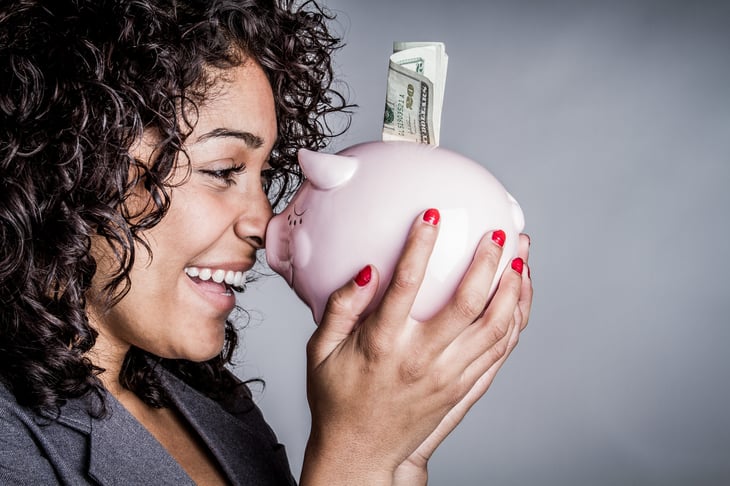
Editor's Note: This story originally appeared on Point2.
For many people, buying their first home is the largest and most complicated transaction they’ll ever make.
If you’re thinking about putting your foot on the property ladder, you may already be daunted by the sheer cost of everything. And one of the most alarming figures is the down payment, a lump sum often running into the tens of thousands of dollars.
Figuring out how you’ll ever put that much money aside can be troubling, making it seem like you’ll never be able to afford your own place.
Fortunately, there are several things you can do to make your homeownership goals a little more achievable.
In this guide, we’ll list some helpful tips and methods that almost anyone can use to save for a down payment.
How Much Do I Need to Save for a Down Payment?

Most lenders will require you to put down a down payment of between 5% and 20% of the home’s purchase price before you qualify for a mortgage.
The actual percentage depends on several factors, such as location and your credit score, among others. Certain loan types allow you to put down less but are typically dependent on strict qualifying factors.
You’re advised to try and put down at least 20%. Not only does that help you build a healthy chunk of equity and reduce the mortgage repayments, but it also helps you avoid mortgage insurance.
In both the U.S. and Canada, private mortgage insurance (PMI) is mandatory for any borrower who puts down less than 20%. Unfortunately, this comes with an extra cost, usually added to your mortgage repayments.
With house prices running into the hundreds of thousands of dollars, a 20% down payment is a large sum. But, with the following tips, this goal can become more manageable.
1. Make a Plan of Action

First of all, make sure you really want to purchase property and are comfortable being in it for the long run.
On average, it takes prospective homeowners around seven years to save up a 20% deposit. Armed with this information, make a plan of action, complete with a realistic timescale.
Obviously, prices fluctuate, but you can use current figures as a starting point.
First, scout the market for homes that meet your needs and look at their sale price. From here, figure out how much 20% is (or how much you’re comfortable with), then break that into monthly installments over your chosen number of years.
With this figure in mind, look at your current spending habits and budget, and see if you can realistically accommodate putting that much aside each month.
In particular, consider where you can cut down your spending and start crafting your plan.
2. Learn to be Frugal

At first glance, figuring out how to cut costs might seem difficult. However, there are many seemingly small changes, and some bigger ones, that you can make to reach a sizeable amount of savings each month. Here are a few ideas:
- Swap those fancy vacations for something more humble, such as staycations or camping trips.
- Reduce the number of times you eat out. Instead, create weekly food plans to keep you on track and prevent overspending.
- Instead of going out every week, switch things up from time to time. For example, invite friends to your place — perhaps you can even enjoy some homemade beverages!
- Check out second-hand stores before buying brand-new books, clothes, DVDs and other items.
- Sell your car — vehicles cost thousands of dollars annually to keep running. If viable, swap driving for public transport, walking or cycling. If yours is a two-car household, this is an extremely effective way to free up extra cash for your monthly savings.
3. Pay Off Your Existing Debts

Before you start putting cash aside for your down payment, it’s essential to pay off your current debts.
For one thing, some lenders may refuse to give you a mortgage if you already have too much debt. But more importantly, the money you save in monthly debt repayments can go toward your down payment instead.
4. Downsize or Move Elsewhere

It’s easy to become attached to a place, even if you’re just renting. But, one of the best ways to free up extra cash for a down payment is to move out and find a cheaper place.
For couples living apart, this is a great chance to move in together, splitting the rent rather than paying for two separate places. Or perhaps you’re living in an expensive neighborhood and could save more by moving further out?
One way to make some fantastic savings is to move back home with your family or in-laws. It’s possible to save thousands of dollars each month this way.
If that sounds like a nightmare, maybe moving to another country is an option. In the age of remote work, it’s easier than ever to relocate to a country with lower living costs yet still keep your current job.
5. Save Your Money Wisely

Nowadays, there are many types of savings accounts to choose from, so opt for one that will work for you.
For example, tax-free savings accounts (TFSA) are an excellent choice and essentially ensure that any money you save is exempt from income tax. Other options include mutual funds, fixed-term investments and savings bonds.
Be sure to speak with a financial adviser before deciding, to ensure you find the right solution for you.
Another good option is a high-interest savings account, typically linked to your regular bank account. Offering more flexibility than other options, they give you easier access to your money when you need it.
6. Consider Rent-to-Buy Programs

Another great way to work toward realizing your homeownership dreams is rent-to-own. This enables you to rent your desired home before buying it.
The program basically functions as an enforced savings scheme. So, while you’ll pay more than the market rate for the monthly rent, a portion will automatically be saved toward a down payment on the property.
You can adjust the lease period to suit your needs and adapt the contract to work for both you and the current owner, i.e., your landlord.
Of course, it’s not a perfect solution, and it does come with risks, but with careful research and planning, it can be an excellent way to save up the funds for a down payment.
7. Explore First-Time Homebuyer Programs

In some areas, you might find first-time homebuyer programs in place. Often found in cities looking to redevelop or where property prices tend to be high, they can be a great way to make buying a home more manageable.
Such programs offer first-time buyers a portion of their down payment as an interest-free loan.
With strict criteria to meet, it’s not always easy to qualify, but if you manage it, some cities have been known to offer up to $20,000 to new buyers, totally interest-free.





Add a Comment
Our Policy: We welcome relevant and respectful comments in order to foster healthy and informative discussions. All other comments may be removed. Comments with links are automatically held for moderation.